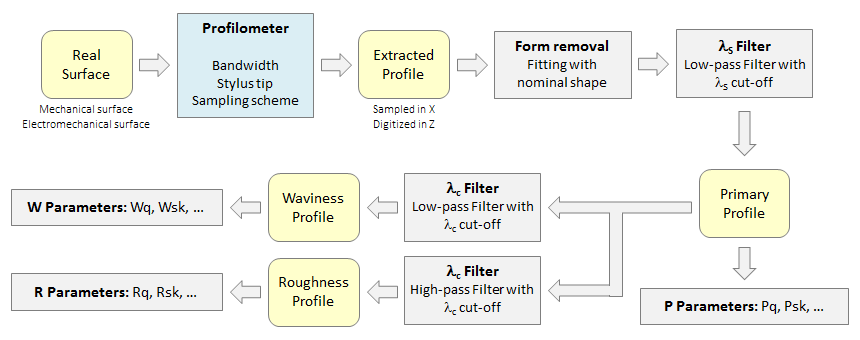Introduction
Clean and safe water is essential for human survival and well-being. Throughout history, civilizations have devised ingenious methods to ensure the quality of their water supply. Among the most remarkable innovations were the filtration techniques employed in aqueduct systems. In this exploration, we dive into the historical methods that ancient societies used to safeguard the quality of their water as it flowed through aqueducts.
Clean and safe water stands as an unequivocal cornerstone of human survival and well-being. It transcends the boundaries of time and geography, holding a timeless significance that resonates across civilizations. Throughout history, societies have displayed an unwavering commitment to securing a dependable source of quality water for their communities. One of the most astonishing and enduring manifestations of this commitment lies in the intricate and ingenious methods used to safeguard water quality within the ancient aqueduct systems.
These aqueducts, often hailed as engineering marvels of their time, served as the lifeblood of countless civilizations. They were more than mere conduits for water; they were conduits of life, health, and prosperity. As we delve into this exploration, we embark on a journey through time, unraveling the remarkable techniques and innovations that our forebears employed to ensure that the water coursing through these ancient aqueducts was pure, potable, and free from contaminants.
From the aqueducts of ancient Rome, where the Romans used a meticulous system of settling tanks, sand filtration, and even the transportation of water over great distances to prevent contamination, to the qanats of Persia, where gravity and underground tunnels maintained the purity of water sources, these ingenious methods are a testament to the human quest for cleaner water. The meticulous planning, engineering prowess, and dedication to public health demonstrated by these ancient societies continue to inspire awe and admiration.
Beyond the technical aspects, the historical methods employed in safeguarding water quality hold valuable lessons for our modern world. They highlight the deep-seated understanding that access to clean water is not just a matter of convenience but a fundamental right and necessity. In an era where water quality and scarcity remain pressing global issues, the wisdom of the ancients provides a beacon of guidance for crafting sustainable and effective solutions to ensure a safe and abundant water supply for all.
As we navigate the annals of history to uncover these remarkable stories of water quality preservation, we are reminded that the past has much to teach us about securing a healthier and more sustainable future. The legacy of these ancient aqueducts serves as a testament to the enduring human spirit and its unyielding commitment to the well-being of all who depend on the life-giving flow of clean water.
Looking for more insights? You’ll find them right here in our extended coverage: A journey through time: How ancient water systems inspired today’s …
The Romans, known for their engineering prowess, developed one of the earliest and most effective water filtration systems. In their aqueducts, water flowed through sand beds that acted as natural filters. These sand beds effectively removed impurities and sediments, ensuring a cleaner water supply. The method was simple yet highly efficient, reflecting the Romans’ understanding of the importance of water quality for public health.
The Romans, known for their engineering prowess, developed one of the earliest and most effective water filtration systems, showcasing their remarkable innovation in maintaining a clean and healthy water supply for their cities. In their aqueducts, water flowed through carefully designed sand beds that functioned as natural filters. This ingenious system not only provided a consistent and reliable water source but also ensured that the water delivered to their citizens was of high quality, free from impurities and sediments.
The simplicity and efficiency of this filtration method are a testament to the Romans’ deep understanding of the importance of water quality for public health. In an era when diseases transmitted through contaminated water sources were a significant threat, the Roman commitment to clean water was visionary. Their filtration system set a standard that would be emulated and refined by civilizations throughout history.
What made the Roman sand bed filtration system particularly effective was its ability to naturally trap and remove particles and impurities from the water as it passed through. The sand acted as a physical barrier, capturing debris and sediments, while allowing the clear water to pass through. This process not only improved the taste and appearance of the water but also contributed to reducing waterborne diseases, making it safer for consumption and daily use.
The Roman dedication to clean water didn’t stop at filtration; it extended to an elaborate network of aqueducts, pipes, and distribution systems that ensured the water reached every corner of their cities. This commitment to public health through clean water infrastructure set a precedent for future civilizations and played a pivotal role in the development of modern water supply and sanitation systems.
Today, the legacy of the Roman water filtration system can be seen in the advanced water treatment technologies that provide clean drinking water to millions of people worldwide. The Romans’ timeless wisdom continues to inspire engineers and scientists as they strive to ensure access to safe and clean water, underscoring the enduring impact of ancient innovations on our modern world.
Don’t stop here; you can continue your exploration by following this link for more details: The Fault with Asphalt: Towards Absorbent Urban Design in New …
Another method employed by ancient civilizations, including the Egyptians, was the use of settling pools. Water was directed into large reservoirs or settling basins, allowing suspended particles and impurities to settle at the bottom. The clearer water at the surface was then drawn off for distribution. This straightforward yet effective technique allowed for the removal of sediment and contaminants, improving water quality.
In the realm of ancient engineering and water management, the use of settling pools, an ingenious and pragmatic approach, stood as a testament to the wisdom of civilizations such as the Egyptians. This method played a pivotal role in the quest for clean and safe water, a fundamental requirement for sustaining life and civilizations.
Settling pools, also known as sedimentation basins, were a remarkable solution to the problem of water purification. In a world where modern filtration technology was nonexistent, these ancient engineers harnessed the forces of nature to create an efficient water treatment system. Here’s how it worked:
Water, often sourced from rivers or other natural bodies, was first channeled into large reservoirs or settling basins. These basins were carefully designed to encourage the natural process of sedimentation. As the water flowed into these tranquil pools, it underwent a transformation. Suspended particles, dirt, debris, and impurities that clouded the water’s clarity gradually settled to the bottom under the influence of gravity.
The result was a clear demarcation between the settled sediments at the basin’s floor and the cleaner water at the surface. Ingeniously, the ancient engineers devised mechanisms to draw water exclusively from the top layer, ensuring that the sediment-laden water remained undisturbed at the bottom.
This straightforward yet effective technique had profound implications for public health. By allowing the sediment and contaminants to settle out of the water, it significantly improved water quality. The removal of impurities not only made the water more visually appealing but, more importantly, it reduced the risk of waterborne diseases. In an era when microbial pathogens were not fully understood, the practice of settling pools became a critical line of defense against illness, contributing to the longevity and well-being of ancient societies.
Today, as we reflect on the legacy of ancient civilizations like the Egyptians, we can draw inspiration from their innovative approaches to tackling essential problems. The use of settling pools, born from a deep understanding of nature’s processes, serves as a reminder that even in the absence of modern technology, human ingenuity can find elegant and effective solutions to complex challenges. It also underscores the timeless importance of clean water, a resource that continues to shape the course of human history and remains central to our well-being in the modern world.
Additionally, you can find further information on this topic by visiting this page: Water Quality and Treatment – MWD

Some ancient cultures used natural processes to improve water quality. Rainwater harvesting was prevalent in many regions, especially in arid climates. The collected rainwater was often cleaner and safer for consumption than other sources. Additionally, coagulation techniques involving the use of substances like alum or crushed seeds helped particles in the water bind together, making them easier to remove through settling or filtration.
Ancient civilizations demonstrated an impressive understanding of water quality and purification methods, harnessing natural processes and ingenious techniques to ensure access to clean and safe water sources.
Rainwater harvesting was a prevalent practice in many ancient cultures, particularly in regions with arid or semi-arid climates where water was a precious resource. These societies recognized the inherent purity of rainwater as it fell from the sky, devoid of the contaminants often found in other water sources. By capturing and storing rainwater in specially designed reservoirs, they ensured a reliable supply of clean water for various purposes, including drinking and irrigation.
In addition to rainwater harvesting, ancient civilizations developed innovative coagulation techniques to improve water quality. These methods involved the use of substances like alum or crushed seeds, which had natural properties to facilitate the removal of impurities from water. When added to turbid or contaminated water, these coagulants caused suspended particles and impurities to bind together, forming larger, more easily removable clumps.
Once these particles had clumped together, settling or filtration methods were employed to separate them from the water. Sedimentation basins or settling tanks allowed the heavy coagulated particles to sink to the bottom, leaving clearer water above. In some cases, finely woven fabrics or porous materials were used as rudimentary filters to strain out remaining impurities, ensuring that the water emerged even purer.
These ancient techniques, born out of necessity and observation, paved the way for modern water treatment processes. They illustrate the resourcefulness of our ancestors in addressing one of the most fundamental human needs: access to clean and safe drinking water. Today, as we confront new water challenges, we can draw inspiration from these time-tested methods while applying advanced technologies to provide safe and sustainable water solutions for a growing global population. The legacy of these ancient practices reminds us of the enduring importance of water quality and the innovative spirit of human civilization in overcoming challenges related to this vital resource.
For additional details, consider exploring the related content available here Water supply system | Description, Purification, Distribution, & Water …

In certain parts of the world, ceramic and cloth filters were used to refine water quality. Ceramic pots or containers with small pores allowed water to pass through while trapping impurities. Similarly, cloth filters made from materials like linen or cotton were employed to strain out particles. These methods were especially valuable for households and smaller-scale water treatment.
In various regions around the world, ingenious solutions were employed to ensure access to clean and safe drinking water. Among these, ceramic and cloth filters emerged as practical and effective means of enhancing water quality.
Ceramic pots or containers, carefully crafted with small pores, played a pivotal role in water purification. These specialized vessels allowed water to seep through while effectively trapping impurities, ranging from sediment to harmful microorganisms. The result was water that was not only clearer but also considerably safer for consumption. This simple yet innovative method became a lifeline for communities and households in areas where clean water sources were scarce or contaminated.
In addition to ceramic filters, cloth filters made from materials such as linen or cotton became essential tools in the quest for better water quality. These porous fabrics served as effective barriers, straining out particles and debris that could otherwise pose health risks. Communities, particularly in regions with limited resources, turned to cloth filters as a cost-effective means of purifying water, ensuring that even in the absence of advanced technology, they could take crucial steps toward improving their overall well-being.
These methods, rooted in tradition and necessity, were especially valuable for households and smaller-scale water treatment efforts. They exemplify the resourcefulness of communities in addressing a fundamental human need: access to clean and safe drinking water. Today, as we explore modern water treatment technologies, it’s essential to acknowledge and appreciate these historical solutions that have paved the way for advancements in ensuring the health and vitality of communities worldwide.
To expand your knowledge on this subject, make sure to read on at this location: Water | Free Full-Text | Water Quality Focusing on the Hellenic World …

Charcoal and gravel were used as filtration media in some ancient aqueduct systems. Water passed through layers of charcoal and gravel, which acted as effective filters, removing impurities and enhancing water quality. This method was particularly valuable for purifying water in locations where sand or settling basins were not readily available.
Charcoal and gravel, unassuming as they may seem, played a pivotal role in the history of water supply and disease prevention through ancient aqueduct systems. Water, the elixir of life, often flowed through these systems, and ingenious techniques were employed to ensure its purity.
In the ingenious design of ancient aqueducts, charcoal and gravel emerged as unsung heroes. They served as the guardians of public health, purifying water in regions where nature had not provided the convenience of sand or settling basins. As this life-sustaining liquid passed through layers of charcoal and gravel, a transformative process unfolded.
Charcoal, known for its remarkable absorptive properties, absorbed impurities, odors, and contaminants present in the water. It acted as a natural filter, cleansing the water and making it safer to drink. Gravel, on the other hand, provided a physical barrier, preventing larger debris and particles from entering the water supply. Together, they formed a formidable purification system that enhanced water quality, ensuring that the precious resource reaching communities was not only abundant but also safe.
This filtration method, born out of necessity, reflected the resourcefulness of ancient engineers and their commitment to public health. It allowed communities to thrive by reducing the risk of waterborne diseases, a significant threat in times when advanced sanitation measures were scarce.
In a world where clean water remains a fundamental human right and a critical element in safeguarding public health, the lessons from ancient aqueducts resonate strongly. The utilization of locally available materials like charcoal and gravel as effective filtration media is a testament to human adaptability and innovation. It reminds us that, even in the face of limited resources, ingenious solutions can be devised to protect the well-being of communities.
Today, as we continue to grapple with global water challenges, we can look back to the wisdom of ancient civilizations and their innovative approaches to ensure safe water supplies. Charcoal and gravel, once the cornerstone of early water filtration, serve as a timeless reminder of the crucial role that resourcefulness, science, and engineering play in securing one of life’s most vital resources. This enduring legacy of ancient aqueducts continues to inspire modern efforts to provide clean and safe water to all, underscoring the significance of learning from our shared past as we work towards a healthier and more sustainable future.
Additionally, you can find further information on this topic by visiting this page: Dam | Definition, History, Types, Environmental Impacts, Examples …

While modern water treatment technologies have come a long way, the historical methods of aqueduct filtration serve as valuable lessons. These ancient techniques highlight the significance of water quality for public health and the resourcefulness of past societies in ensuring safe water supply. Today, as we face global water challenges, including contamination and scarcity, the innovative approaches of our ancestors inspire us to explore sustainable and effective solutions.
Honoring the Legacy of Ancient Aqueduct Filtration: Guiding Lights for Modern Challenges
In our quest for progress and innovation, it’s crucial to remember that the wisdom of our ancestors often holds timeless insights. The historical methods of aqueduct filtration, born out of necessity and honed over generations, continue to resonate with us today. These ingenious techniques serve as poignant reminders of the paramount importance of water quality for public health and the resilience and resourcefulness of past societies in safeguarding their water supply.
A Testament to the Value of Clean Water
The ancient methods of aqueduct filtration underscore a universal truth: clean and safe water is not just a luxury but a fundamental human right. The historical emphasis on water quality was driven by the stark realities of waterborne diseases that ravaged communities in the past. These lessons are as relevant today as they were centuries ago, particularly as we grapple with contemporary challenges like pollution, water scarcity, and the global distribution of clean water resources.
Resourcefulness in the Face of Adversity
The historical filtration techniques also highlight the resourcefulness of ancient societies. Faced with limited technology, they devised ingenious methods using readily available materials. Sand, gravel, ceramic, charcoal, and even cloth were transformed into effective filtration media, reflecting the remarkable ability of past generations to adapt and innovate.
Inspiration for Sustainable Solutions
In an era where sustainable and environmentally responsible solutions are paramount, the legacy of aqueduct filtration methods becomes especially pertinent. The past shows us that effective water filtration need not rely solely on energy-intensive or complex processes. Simple and natural methods, like sand beds and settling basins, can significantly improve water quality while minimizing environmental impact.
Facing Modern Water Challenges
As we confront 21st-century water challenges, ranging from industrial contamination to the increasing strain on global water resources, the innovative approaches of our ancestors serve as guiding lights. By studying and adapting these historical methods, we can discover new ways to address contemporary water issues. From decentralized filtration systems inspired by ancient ceramics to rainwater harvesting techniques reminiscent of our forebears, there is a wealth of knowledge waiting to be rediscovered and revitalized.
Conclusion: Nurturing the Continuity of Clean Water
The historical methods of aqueduct filtration are not relics of the past; they are enduring legacies that continue to shape our understanding of water quality and its profound impact on public health. In acknowledging the wisdom of our ancestors, we gain a deeper appreciation for the ongoing quest to provide clean and safe water for all. As we navigate the complex water challenges of the modern world, we do so with the enduring lessons of history in our hearts, inspired by the resourcefulness and determination of those who came before us. In this collective journey, we honor their legacy by ensuring that the continuity of clean water remains a cornerstone of our society.
Looking for more insights? You’ll find them right here in our extended coverage: A Brief History of Water and Health from Ancient Civilizations to …

The history of water quality and aqueduct filtration techniques showcases the wisdom and resourcefulness of ancient civilizations. Their innovative methods, whether involving sand beds, settling pools, precipitation, ceramic filters, or charcoal, laid the foundation for modern water treatment practices. As we address contemporary water challenges, we can draw inspiration from the past to ensure that clean and safe water remains accessible to all. The enduring legacy of historical filtration techniques reminds us of the timeless importance of water quality for human well-being.
The history of water quality and aqueduct filtration techniques showcases the wisdom and resourcefulness of ancient civilizations. Their innovative methods, whether involving sand beds, settling pools, precipitation, ceramic filters, or charcoal, laid the foundation for modern water treatment practices.
In ancient times, civilizations faced the pressing need to provide their populations with safe and clean drinking water. They ingeniously developed filtration methods that were not only effective but also sustainable within the constraints of their technological knowledge. For instance, the use of sand beds allowed water to percolate through layers of fine sand, effectively removing impurities and sediments. Settling pools, another ancient technique, relied on gravity to let suspended particles settle at the bottom before drawing off the clearer water.
The utilization of precipitation and coagulation agents like alum was yet another innovation, as these substances caused impurities to clump together, making it easier to separate them from the water. Ceramic filters, meticulously crafted with porous materials, acted as effective barriers against contaminants, while charcoal, with its remarkable adsorption properties, could purify water by trapping impurities within its microporous structure.
These ancient filtration techniques not only enhanced the quality of water but also played a crucial role in disease prevention. By reducing the microbial load and removing harmful substances, they helped mitigate the spread of waterborne illnesses, a testament to the foresight of these early civilizations in prioritizing public health.
As we address contemporary water challenges, including pollution, scarcity, and the growing demand for clean water, we can draw inspiration from the past to ensure that clean and safe water remains accessible to all. The enduring legacy of historical filtration techniques reminds us of the timeless importance of water quality for human well-being.
Today, we have the advantage of modern science and technology, allowing us to refine and improve upon ancient filtration methods. However, the underlying principle remains the same: the commitment to providing clean water as a fundamental human right. By combining the wisdom of the past with the innovation of the present, we can develop sustainable and effective water treatment strategies that meet the needs of our ever-growing global population while safeguarding the environment.
In an era where water quality is intricately linked to public health, environmental preservation, and social well-being, the lessons of the past serve as a valuable guidepost. They remind us that the quest for clean water has always been a shared endeavor, transcending time and borders, and that by honoring the ingenuity of our ancestors, we can navigate the complex water challenges of the future.
Additionally, you can find further information on this topic by visiting this page: The Roman Empire (article) | Khan Academy
More links
Looking for more insights? You’ll find them right here in our extended coverage: The Water System of Ancient Rome – Engineering Rome
